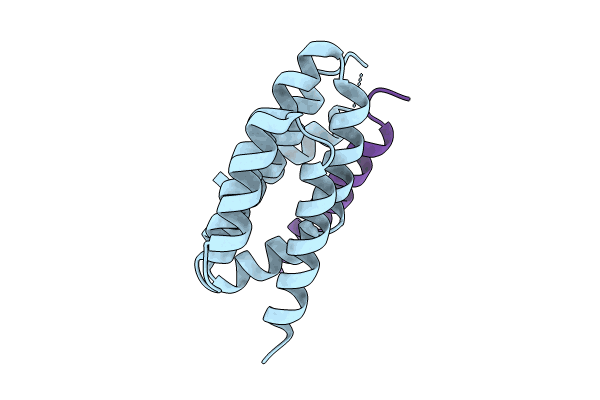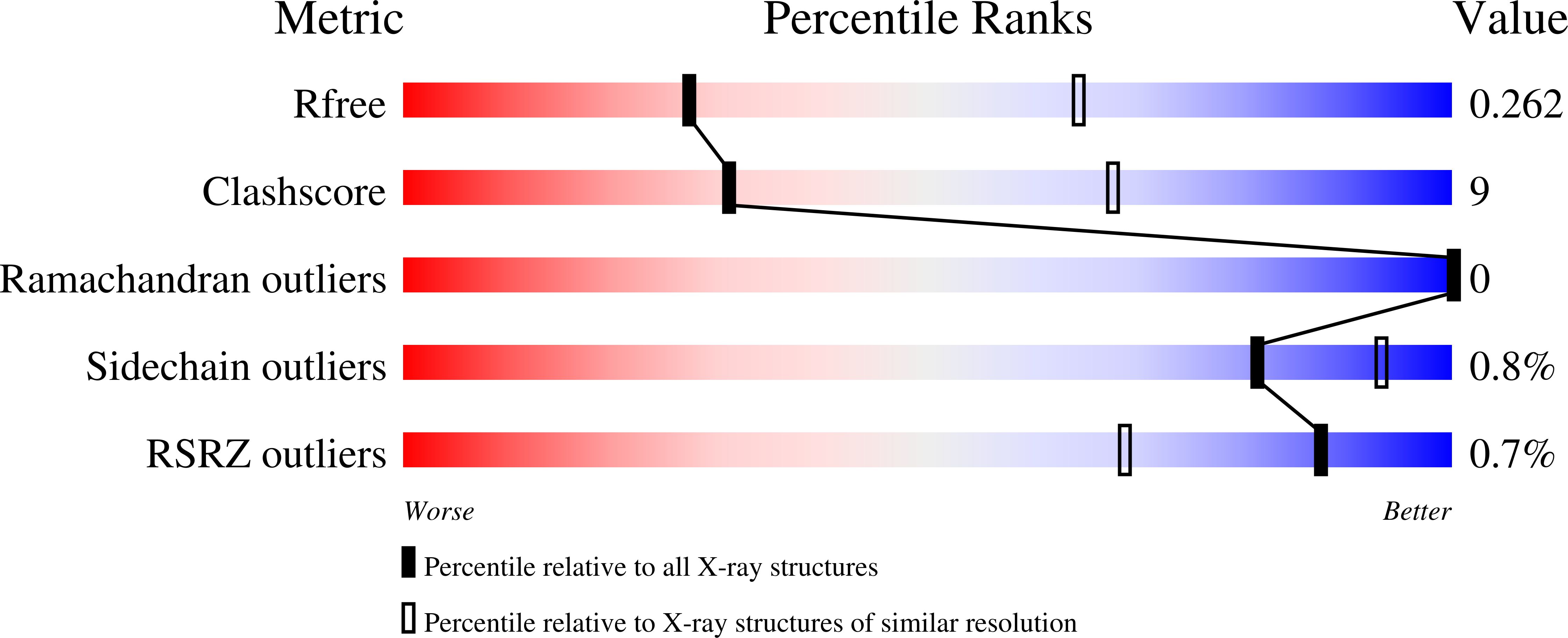
Deposition Date
2023-06-13
Release Date
2024-01-10
Last Version Date
2024-11-06
Entry Detail
PDB ID:
8T5E
Keywords:
Title:
De novo design of high-affinity protein binders to bioactive helical peptides
Biological Source:
Source Organism:
synthetic construct (Taxon ID: 32630)
Homo sapiens (Taxon ID: 9606)
Homo sapiens (Taxon ID: 9606)
Host Organism:
Method Details:
Experimental Method:
Resolution:
3.00 Å
R-Value Free:
0.26
R-Value Work:
0.23
R-Value Observed:
0.24
Space Group:
P 21 21 21


